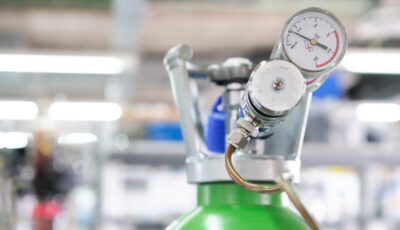Does Size Really Matter?
What Size Affects
There are numerous, unique functions performed every day that use molecular sieve to separate, dehydrate, and create desired product streams. These various functions can require different particle sizes of molecular sieve, whether beads or pellets, which is determined by the conditions of the system and the desired results. It is true that each type of molecular sieve, say Type 4A, will perform the same tasks regardless of the size, however it’s the size that helps determine how efficient the process is, the amount of time required in a cycle, and general mass transfer characteristics.
Size Difference
The mesh scale used when referring the mesh size of molecular sieve beads is often either the Tyler Mesh scale or US Mesh scale, with the most prevalent sizes of molecular sieve beads being 4×8 and 8×12 mesh. Beads with a 4×8 mesh are about twice the size of 8×12 mesh beads and it’s this difference in size that has the highest impact on the physical properties and mass transfer characteristics provided by the beads (See Table 1). There are other bead size options, with 6×8 being utilized in refining operations and beads as small as 20×40 being used in specialized refining and air separation processes. Common pellet sizes are 1/8 inch and 1/16 inch with their respective diameters listed in Table 2.
Table 1
Table 2
Crush Strength
Crush strength is the key physical difference presented by various particle sizes (the size of the bead or pellet). Larger particle sizes naturally offer a higher crush strength; thus, it is stronger. For example, 4×8 mesh beads are often used in Pressure Swing Adsorption (PSA) applications, such as ethanol dehydration, where high pressure is used to allow the beads to adsorb high volumes of water and vacuum pressure is used to release the water from the beads during the regeneration cycle. The extremes of the pressure swing can cause beads to shift during the cycle, so high crush strength is desired to help reduce damage to the beads and offer a longer lifespan than if an ethanol plant were to use smaller 8×12 beads. In Temperature Swing Applications (TSA), such as in dehydration units before cryogenic distillation, the beads are not exposed to such harsh conditions and utilize variants in heat to allow for adsorption and regeneration (desorption) during cycles. Since the beads aren’t exposed to the same rigors as in a PSA application, crush strength is less important for TSA applications, and smaller mesh sized beads are often utilized to increase the Mass Transfer Rate.
Mass Transfer Rate
When compared to larger particles sizes, smaller particle sizes offer a higher Mass Transfer Rate, the rate at which adsorption occurs, which allows for quicker adsorption with longer cycle times. This is due to the fact that adsorption sites on the inside of smaller particles sizes are more easily reached compared to larger sizes, which means liquids and vapors are more quickly adsorbed throughout the entire bead or pellet. This allows for lengthened cycle times with a high efficiency because more molecular sieve in the bed is utilized before break through, the point at which water begins to be present in the product stream.
Pressure Drop
Smaller particle sizes, however, have a higher pressure drop when compared to larger sizes. Pressure drop represents the change or drop in pressure of a stream as it is pushed through the molecular sieve bed. When considering output by volume and energy savings, it is important to keep pressure drop in mind. If a dehydration unit is required to run at full capability, say if it’s the bottleneck in a production process, then larger beads could allow for more product to be pushed through the system in a shorter amount of time. If cost is of huge concern, larger particle sizes, with lower pressure drop, can increase cost savings since the compression of vapors and pumping of liquids can be costly and smaller sizes will cause a higher loss in pressure from the top to the bottom of the adsorption unit.
What to Consider
Choosing the right particle size is crucial for your operation and the choice is typically based on the operating pressure requirements, the method of adsorption (PSA vs TSA), production requirements, and overall cost concerns. Some operations concern the decision based solely on crush strength or pressure drop, while others focus on optimizing capacity per cycle. If given the option in particle size, it’s important to consider the desired Mass Transfer Rate, pressure requirements, and cost control, while minding the requirements for crush strength and adsorption capacity per cycle.
Authored By:
Kolten Burkes
Hengye Inc.
Houston, Texas
info@hengyeinc.com
1-844-308-3271


